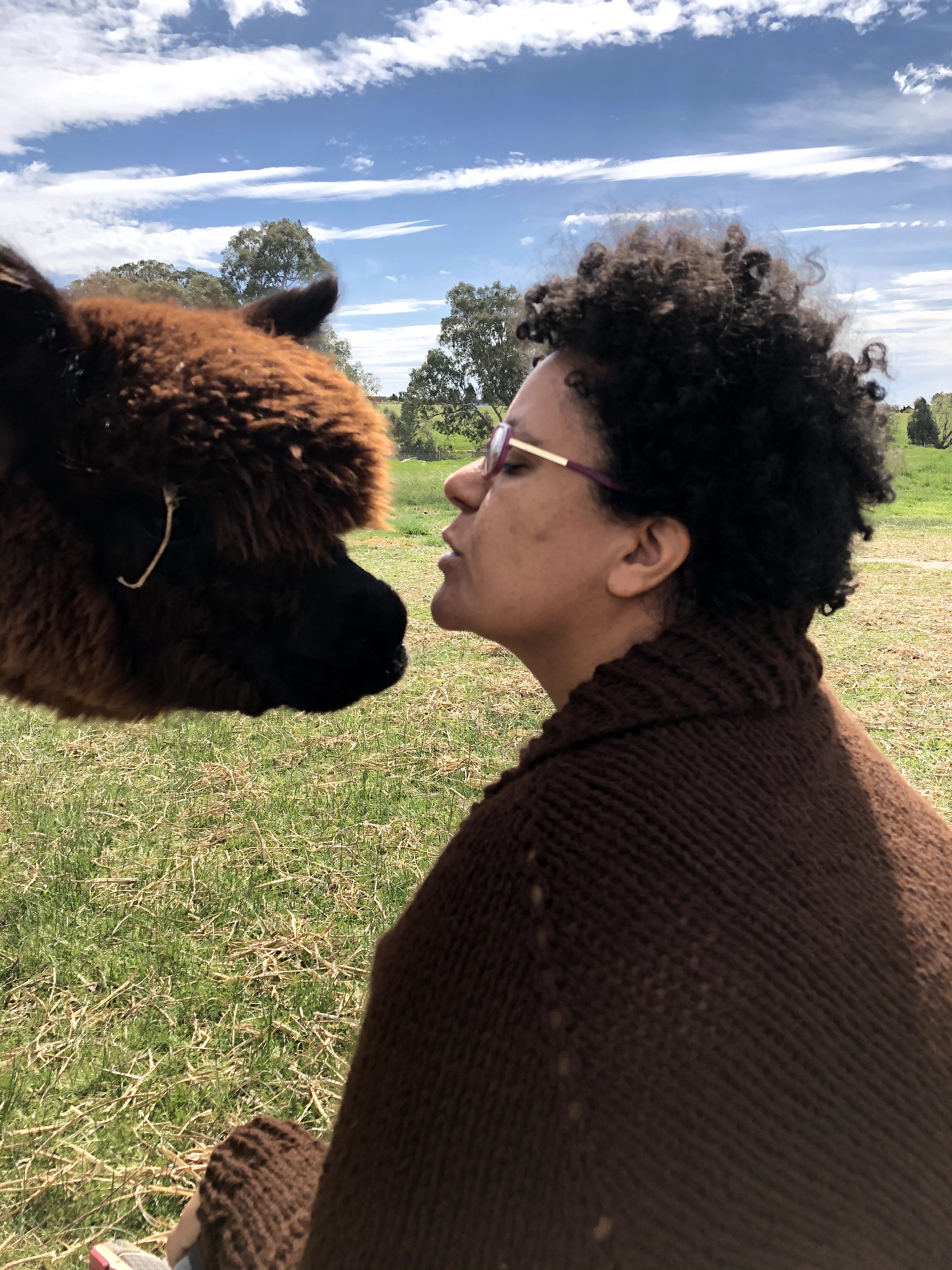What to feed alpacas when the pasture is dry
- Rita

- Feb 18, 2023
- 4 min read
Updated: Feb 2, 2024
Summer and early autumn in Australia are when pastures may be low or dry, so it's essential to supplement your alpacas' diet with quality hay. Alpacas require a regular supply of hay to keep their stomachs functioning and to supply energy for their day-to-day activities.
To ensure they get the nutrition needed, you must check your alpacas' body condition and diet requirements before deciding what feed to purchase and how much to give.

Alpaca body condition score
Body condition scoring is a simple method to check alpacas' weight. Using your hands to palpate your alpacas' middle back and ribs, you can determine how much fat coverage they have. In Australia, body condition scoring is done on a scale of 1 to 5. A body score of 1 is highly emaciated, whereas a body score of 5 is obese. Ideally, we should have alpacas with around 3 to 3.5 body scores, with pregnant females around 3.5.

Alpacas' different nutritional needs
After checking their body scores, the next thing is to determine which nutritional stage your alpacas are in. Wethers (castrated males) and non-pregnant females will require much less energy and protein than growing alpacas and pregnant and lactating females. As a rough guide, lactating females require almost double the nutritional needs of wethers. Regardless of their dietary requirements, all alpacas should have ad-lib hay available, which means hay is always available.
Types of hay for alpacas
The following are common types of hay you will find available in Australia. Grass and meadow hay are usually at the lower end of energy and protein, with clover and lucerne at the higher end.
Grass hay
Meadow hay (mixed pasture)
Oaten hay
Vetch hay
Clover hay
Lucerne hay (alfalfa)
When sourcing hay, ensure you purchase from reputable suppliers. Check the condition of the hay before buying it. Do not buy if mouldy, wet or contaminated with weeds. If in doubt, buy one bale to try. If in good condition and your alpacas enjoy it, purchase more. Alpacas can also eat cracked lupins, a great leguminous supplement packed with protein. Lupins are particularly good for pregnant and lactating females and growing youngsters (alpacas less than two years old). There are also commercial alpaca pellets available. While they can be useful as a treat, or when supplementing the feed of alpacas who need to put on weight, they are highly processed and should not be the main staple of their diet.
What not to feed alpacas
Remember, keep your alpacas' nutrition simple with good-quality hay. Do not feed them:
straw
mouldy hay
kitchen scraps
pony mix or any other farm animal mix
chicken feed, pellets or grains
bread
Round bales or small squares?
When it comes to hay, you can choose to have it in large round bales or small squares. Round bales last longer, while small squares make handling more accessible and a personal choice. Whatever you do, ensure you buy enough hay for your requirements and keep it shredded until use.

How much to feed alpacas
How much should you feed your alpacas? Grass and meadow hay can be fed ad-lib and should always be available. However, higher energy/protein sources such as lucerne and cracked lupins need to be fed sparingly if you want to maintain the body score condition of your alpacas. However, if your alpacas are growing (less than two years old), pregnant, lactating, or need to put on weight, feed higher-quality feeds more often and in larger quantities.
Allow plenty of headspace and feed stations for the number of alpacas you have. For example, place five to seven stations well spaced out if you have five alpacas. Alpacas will compete for food, so it is vital to ensure those lower in the pecking order get enough to eat. Observe your alpacas while they eat to find out if anyone is missing out.
Place hay in a dry and shady place. E.g. under a tree, or in the alpaca shelter. Remove all bailing twine and netting and dispose of it in the rubbish bin. Alpacas can choke and die by accidentally ingesting plastic netting.
If you can, stock up on hay until the end of summer or longer. Keep it in a dry shed. If changing their diet by adding a new type of feed, do it slowly and gradually over 10-14 days, so their stomachs can adapt. Alpacas can get sick if their diet is changed quickly, as their stomach bacteria needs time to adapt to new foods.
Conclusion
Australian summers and early autumns are harsh on pastures, particularly in southern states like Victoria and South Australia. Make sure your alpacas have hay available when fields are dry and low. If unsure of your alpacas' condition and feed regime, speak to your mentor breeder, who should be able to provide advice.
Like what you read? Then subscribe to our newsletter to get seasonal alpaca information in your inbox. You can also learn more about alpacas at our regular workshops. Check our workshop page, and if you don't see anything running, email us to let us know what you want to learn about. We often curate courses for couples/partners and small groups.



